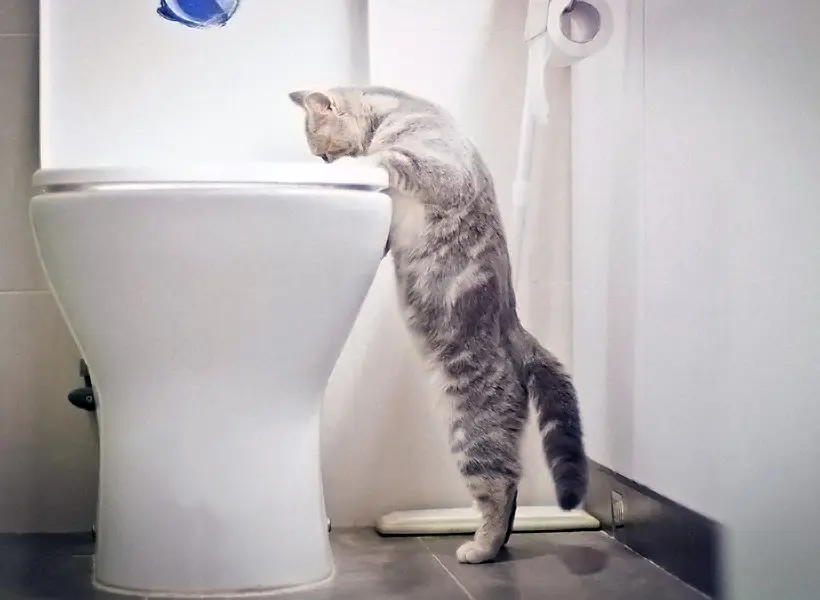Hazards of Flushing Cat Poop Down Your Toilet - Avoid Possible Issues
Hazards of Flushing Cat Poop Down Your Toilet - Avoid Possible Issues
Blog Article
The article author is making several great annotation on Can You Flush Cat Poop Down The Toilet? overall in this article directly below.

Introduction
As feline owners, it's important to bear in mind just how we dispose of our feline good friends' waste. While it may appear hassle-free to flush pet cat poop down the toilet, this practice can have damaging consequences for both the environment and human health.
Ecological Impact
Flushing cat poop introduces damaging microorganisms and parasites right into the water supply, positioning a significant risk to water communities. These impurities can negatively impact marine life and compromise water quality.
Health Risks
Along with environmental concerns, flushing feline waste can additionally pose wellness risks to people. Cat feces may contain Toxoplasma gondii, a bloodsucker that can trigger toxoplasmosis-- a possibly serious ailment, especially for pregnant women and individuals with weakened immune systems.
Alternatives to Flushing
Thankfully, there are much safer and extra responsible methods to deal with cat poop. Consider the complying with choices:
1. Scoop and Dispose in Trash
One of the most common method of getting rid of pet cat poop is to scoop it right into a naturally degradable bag and toss it in the trash. Make sure to use a specialized litter inside story and get rid of the waste promptly.
2. Use Biodegradable Litter
Choose biodegradable pet cat clutter made from materials such as corn or wheat. These litters are eco-friendly and can be safely disposed of in the trash.
3. Hide in the Yard
If you have a lawn, consider burying feline waste in an assigned location far from veggie yards and water resources. Make certain to dig deep adequate to avoid contamination of groundwater.
4. Mount a Pet Waste Disposal System
Purchase a pet garbage disposal system particularly designed for feline waste. These systems use enzymes to break down the waste, lowering odor and ecological impact.
Verdict
Liable family pet possession prolongs past offering food and shelter-- it also includes appropriate waste management. By refraining from purging feline poop down the commode and choosing different disposal approaches, we can minimize our environmental impact and shield human wellness.
Why Can’t I Flush Cat Poop?
It Spreads a Parasite
Cats are frequently infected with a parasite called toxoplasma gondii. The parasite causes an infection called toxoplasmosis. It is usually harmless to cats. The parasite only uses cat poop as a host for its eggs. Otherwise, the cat’s immune system usually keeps the infection at low enough levels to maintain its own health. But it does not stop the develop of eggs. These eggs are tiny and surprisingly tough. They may survive for a year before they begin to grow. But that’s the problem.
Our wastewater system is not designed to deal with toxoplasmosis eggs. Instead, most eggs will flush from your toilet into sewers and wastewater management plants. After the sewage is treated for many other harmful things in it, it is typically released into local rivers, lakes, or oceans. Here, the toxoplasmosis eggs can find new hosts, including starfish, crabs, otters, and many other wildlife. For many, this is a significant risk to their health. Toxoplasmosis can also end up infecting water sources that are important for agriculture, which means our deer, pigs, and sheep can get infected too.
Is There Risk to Humans?
There can be a risk to human life from flushing cat poop down the toilet. If you do so, the parasites from your cat’s poop can end up in shellfish, game animals, or livestock. If this meat is then served raw or undercooked, the people who eat it can get sick.
In fact, according to the CDC, 40 million people in the United States are infected with toxoplasma gondii. They get it from exposure to infected seafood, or from some kind of cat poop contamination, like drinking from a stream that is contaminated or touching anything that has come into contact with cat poop. That includes just cleaning a cat litter box.
Most people who get infected with these parasites will not develop any symptoms. However, for pregnant women or for those with compromised immune systems, the parasite can cause severe health problems.
How to Handle Cat Poop
The best way to handle cat poop is actually to clean the box more often. The eggs that the parasite sheds will not become active until one to five days after the cat poops. That means that if you clean daily, you’re much less likely to come into direct contact with infectious eggs.
That said, always dispose of cat poop in the garbage and not down the toilet. Wash your hands before and after you clean the litter box, and bring the bag of poop right outside to your garbage bins.
https://trenchlesssolutionsusa.com/why-cant-i-flush-cat-poop/

As a keen person who reads on How to Dispose of Cat Poop and Litter Without Plastic Bags, I assumed sharing that excerpt was a good thing. Do you know somebody who is interested in the subject? Feel free to share it. We enjoy reading our article about How to Dispose of Cat Poop and Litter Without Plastic Bags.
Click For More Info Report this page